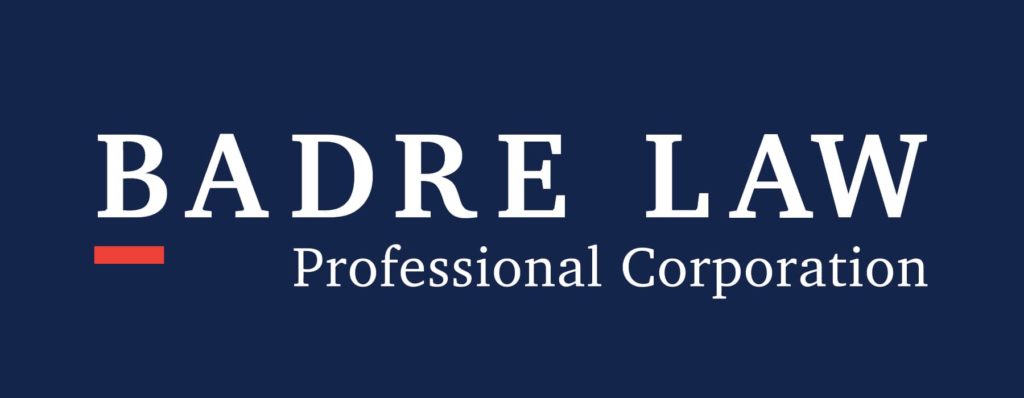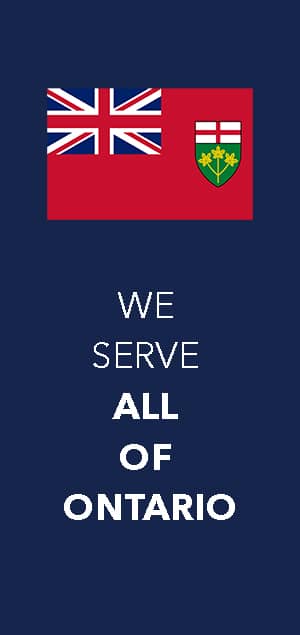Imagine walking through a grocery store, admiring the colourful produce, and suddenly slipping on a wet floor, resulting in a painful injury. Slip and fall accidents can happen to anyone, anywhere, and can lead to serious consequences. In 2023, it’s crucial to understand the various aspects of slip and fall accidents, from common causes to property owners’ responsibilities, and the steps you should take if you ever find yourself in such an unfortunate situation. Let’s explore this topic and arm ourselves with the knowledge to prevent and address slip and fall incidents.
Essential Insights for Canadian Slip and Fall Claims
Understanding slip and fall accidents requires knowledge of common causes, locations where they occur, types of injuries resulting from them, and legal implications.
Property owners have a duty to maintain safe premises or face liability for any injury that occurs due to negligence.
Victims may be eligible for compensation including medical expenses, lost wages & reimbursement for pain & suffering with the help of an experienced personal injury lawyer.
Understanding Slip and Fall Accidents in Canada

Slip and fall accidents refer to personal injury cases where an individual slips or trips and sustains an injury on someone else’s property. These cases often result in a slip-and-fall claim, and around 40% of all avoidable injuries in Canada stem from slip-and-fall incidents. Such accidents can transpire in various locations like grocery stores, restaurants, and public sidewalks, affecting numerous fall accident victims.
Effective housekeeping practices, prompt attention to spills or debris, flooring with adequate traction, and appropriate footwear are all measures that can help minimize the risk of slip and fall accidents.
In Ontario, personal injury and slip and fall claims must be filed within two years. Exceptions may exist in certain circumstances. Navigating the legal implications of slip and fall accidents requires a good understanding of their common causes and the places where they most likely occur.
Common Causes: Footwear, Flooring
Slip and fall accidents are often caused by factors that reduce the friction of the ground, such as wet floors, snow, and ice. In some cases, structural defects like uneven surfaces, broken stairs, and loose floorboards can also contribute to these accidents. Weather-related hazards, including snow, ice, rain, and wind, pose additional risks for slip and fall accidents.
Slipping on a wet floor can lead to serious injury. If there were no hazard signs put up in a store, restaurant, or business, the injured party may be entitled to compensation. The third party could be held responsible for the injuries sustained due to the lack of warning of the risk.
Locations Where Slip and Falls Occur
Slip and fall accidents are most likely to occur in public spaces, private properties, and workplaces. The Canadian Centre for Occupational Health & Safety reports that 34% of falling accidents involve a fall from a higher level to a lower level, while uneven or slippery surfaces, tripping hazards, inadequate illumination of pathways, and inappropriate footwear are the primary factors in falls that occur on the same level.
Awareness of the locations and environments most prone to slip and fall accidents enables us to take precautions, prevent such incidents, and avoid potential injuries.
Types of Injuries and Fractures Resulting from Slip and Fall Accidents

Slip and fall accidents can lead to a variety of injuries, ranging from minor bruises, cuts, and sprains to more severe fractures, head and brain trauma, and spinal cord damage. The consequences of these injuries can be both short-term and long-lasting, impacting an individual’s quality of life and potentially causing chronic pain, decreased mobility, and degenerative disc disorders.
Comprehending the types and severity of injuries from slip and fall accidents is fundamental for appropriate treatment and recovery.
Minor Injuries
While they may seem inconsequential at first, minor injuries like strains, sprains, bruises, and soft tissue injuries can still cause discomfort and inconvenience. It is crucial to seek medical attention for minor injuries, as they can potentially worsen over time and lead to more serious complications. The recommended treatment for minor injuries is:
Rest
Ice
Compression
Elevation (RICE)
Along with over-the-counter medications to reduce pain and swelling.
Disregarding minor injuries may result in escalated pain, swelling, and infection risk. Thus, it’s vital to acknowledge them and seek proper medical care.
Severe Injuries
Severe injuries sustained from slip and fall accidents can include:
Herniated discs
Spinal cord damage
Fractured or broken bones
Head injuries
Soft tissue damage
Serious injuries can have lasting consequences and may require extensive medical treatment, and rehabilitation, and potentially result in long-term disability.
Older individuals are more likely to sustain broken bones in a fall than younger individuals. Consequently, taking necessary precautions during activities that might pose a risk of slip and fall accidents is especially important for older adults.
Property Owners’ Responsibilities and Liability

Property owners have a legal obligation to ensure that their premises are reasonably safe for visitors. This duty of care requires property owners to maintain their premises in a secure condition and take reasonable measures to prevent any known hazards that could lead to harm to others. If a property owner fails to uphold their duty of care, they can be held accountable for any injuries that occur due to their negligence.
The Occupiers’ Liability. The Act is a legal framework that outlines the responsibilities of property occupiers to ensure the safety of visitors from slip and fall accidents. This act defines an occupier as an individual or entity that has control over the premises, such as a business owner or a landlord, and stipulates that they take reasonable steps to prevent hazards from arising due to the condition of the premises or activities conducted on the premises.
Duty of Care
The duty of care in slip and fall cases refers to the legal responsibility of a property owner or occupier to:
Maintain their premises in a safe condition
Take reasonable measures to avert any known hazards that could lead to harm to others
Rectify hazards
Provide warnings
Ensure the general safety of the premises.
A property owner can be held accountable for any injuries due to their negligence if they do not fulfill their duty of care. Hence, property owners should:
Proactively inspect their premises for potential hazards
Rectify any hazards found
Warn about potential risks
Ensure overall safety
Establishing Negligence
To establish negligence in slip and fall accidents, one must consider whether there was a preventable hazard onsite that caused the injury. Questions to be addressed include:
Was there an element that the property owner was aware of and should have taken precautions against?
Did the property owner take reasonable measures to ensure safety on their premises?
Have any incidents of this nature occurred there in the past?
There are exceptions to property owner liability. Property owners are obligated to guarantee that their premises are reasonably safe for invited guests and patrons. Individuals who incurred injuries while perpetrating a crime or trespassing may not be eligible for compensation from the property owner.
Steps to Take After a Slip and Fall Accident
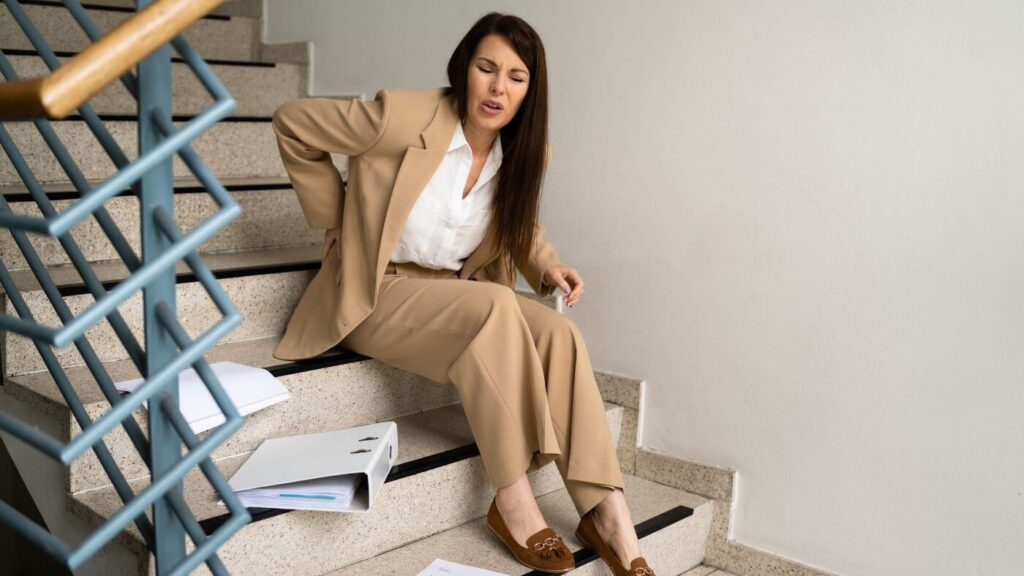
If you experience a slip and fall accident, knowing the appropriate steps to take is vital. These steps can safeguard your safety, protect your legal rights, and furnish you with the necessary information and evidence for a personal injury claim if needed.
The recommended course of action after a slip, trip, and fall accident is to consult with a personal injury lawyer as soon as possible. In the meantime, there are several steps you should take to document the incident and protect your interests.
Seeking Medical Attention
Seeking medical attention promptly after a slip and fall accident is paramount. Even if injuries initially seem minor, medical professional assessment and treatment are necessary. This approach not only safeguards your well-being but also documents your injuries, which may be critical if you pursue a claim for fair compensation.
Remember, minor injuries can potentially worsen over time and lead to more serious complications. By seeking medical attention, you can prevent further complications and have the necessary evidence to support a potential legal case.
Documenting the Scene
Documenting the scene after a slip and fall accident is essential to back any potential legal claims. This process includes:
Capturing photographs of your injuries
Taking pictures of the hazard that led to the fall
Noting any other pertinent details about the accident site
Collecting witness statements, as they can provide crucial evidence to support your claim.
Be sure to note details such as:
the time
date
location
weather conditions
any other relevant information about the accident
Thorough documentation can strengthen your case and help ensure that you receive fair compensation for your injuries.
Reporting the Incident
Reporting the slip and fall incident to the property owner or manager is another crucial step to take. By doing so, you’ll create a record of the incident, which can be important if you decide to pursue a personal injury claim. Be sure to provide a comprehensive account of the incident, including details about your injuries and the hazard that caused the fall.
In addition to reporting the incident to the property owner or manager, it’s imperative to file any necessary reports with insurance companies or authorities following a slip and fall incident. This can help establish a record of the incident and support your claim for compensation.
Hiring a Personal Injury Lawyer for Slip and Fall Cases
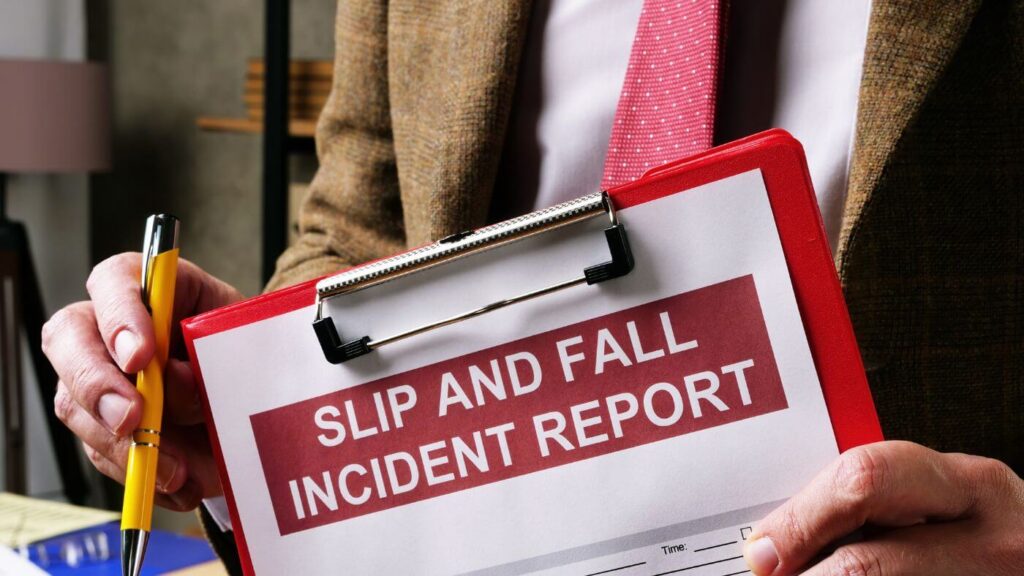
Hiring a personal injury lawyer can greatly benefit your slip-and-fall case. An experienced lawyer can:
Navigate the complex legal process
Gather evidence
Negotiate settlements
Represent you in court to ensure you receive fair compensation for your injuries.
Consideration of the following factors is important when choosing a personal injury lawyer:
Experience
Work ethic
Track record
Availability
A skilled personal injury lawyer can help guide you through the legal process, address your concerns, and advocate for your rights, ensuring you receive the maximum compensation possible for your injuries.
Choosing the Right Lawyer
Weighing their experience, track record, and availability can help you find the right personal injury lawyer for your slip and fall case. Here are some factors to consider.
Experience: Look for a lawyer who has a comprehensive understanding of personal injury law and a history of successful outcomes.
Track record: Research the lawyer’s past cases and see if they have a track record of winning slip and fall cases.
Availability: It’s important to have a lawyer who can respond to your queries and address any concerns during the legal process.
By considering these factors, you can find the right personal injury lawyer for your slip and fall case.
Taking the time to research and select the most qualified personal injury lawyer can significantly impact the outcome of your case, ensuring you receive the compensation you deserve.
How Lawyers Can Help
Personal injury lawyers, also known as fall lawyers, can provide effective advocacy for your right to full compensation in a slip and fall case. They can gather evidence, negotiate with insurance companies, and represent you in court if needed.
A skilled lawyer can help you with:
Navigating the legal process
Addressing your concerns
Advocating for your rights
Ensuring you receive the maximum compensation possible for your injuries
Having a knowledgeable and experienced personal injury lawyer on your side can make all the difference in successfully pursuing a slip and fall claim and obtaining the compensation you deserve.
Compensation for Slip and Fall Injuries
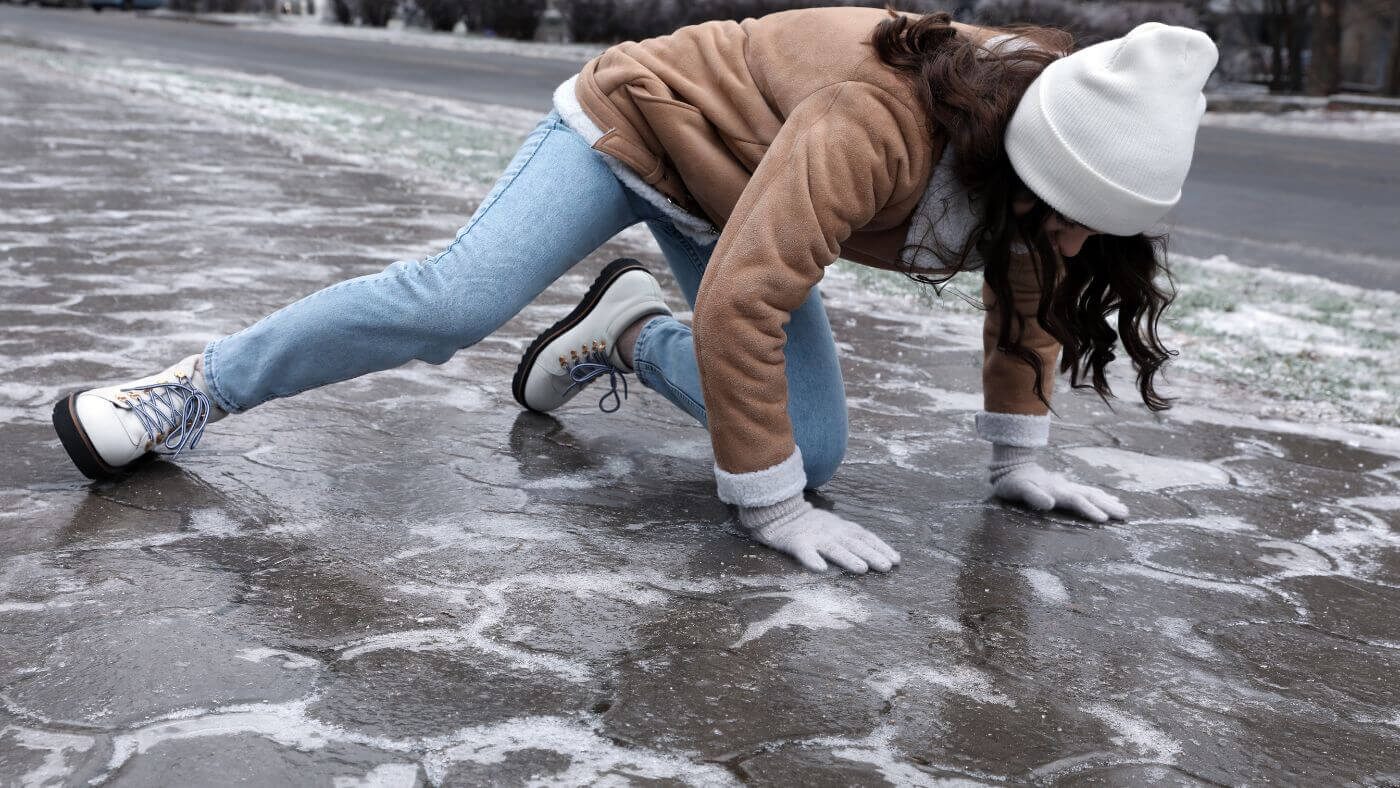
Victims of slip and fall accidents may be eligible for fall accident claims for compensation. This could cover:
Medical costs
Any other financial losses due to their injuries
Reimbursement for pain and suffering
Lost wages
Medical expenses
Any other financial losses incurred as a result of the accident
Understanding the types of compensation available for slip and fall injuries can help you pursue a claim and receive the financial support you need during your recovery.
Medical Expenses
Medical expenses due to slip and fall injuries, including:
Hospitalization
Surgery
Doctor visits
Medication
Ongoing treatments like physiotherapy
Can be compensated through a settlement or court award. Maintaining all receipts, bills, and records of work absences related to the injury is vital to support your compensation claim.
Documenting your medical expenses and enlisting the help of a personal injury lawyer can aid in securing fair compensation for your slip and fall injuries.
Lost Wages
Lost wages due to missed work or reduced earning capacity as a result of slip and fall injuries can also be compensated. To calculate lost wages, subtract the wages earned prior to the injury from the wages earned subsequent to the injury. Evidence such as pay stubs, tax returns, and medical records can be provided to demonstrate lost wages.
Seeking compensation for lost wages can lighten the financial strain of missed work, ensuring you have the necessary resources to concentrate on your recovery.
Pain and Suffering
Pain and suffering compensation encompasses the physical and emotional distress associated with a slip and fall injury and its potential consequences. Compensation typically covers a range of physical injuries, such as broken bones and sprains, as well as psychological injuries like post-traumatic stress disorder (PTSD).
Pursuing compensation for pain and suffering can help mitigate the physical, emotional, and financial toll of a slip and fall injury on your life.
Summary
Slip and fall accidents can happen to anyone and can result in a wide range of injuries, from minor to severe. By understanding the common causes, locations, and types of injuries associated with slip and fall accidents, you can take the necessary precautions to prevent them. If you find yourself in a slip-and-fall accident, knowing the steps to take and the importance of hiring a personal injury lawyer can significantly impact the outcome of your case. Stay informed and proactive to not only prevent slip and fall accidents but also protect your rights and ensure you receive fair compensation if such an incident occurs.
Frequently Asked Questions
What to do when you slip and fall?
Check for any injuries and, if none are present, get up from the floor.
If you’re hurt or unable to move, call for help and keep warm and still as you wait for assistance.
What is the average settlement amount for a slip and fall in Ontario?
The average settlement amount for a slip and fall in Ontario ranges from $10,000 to $418,000.
What does it mean when you slip and fall?
A slip and fall accident is when an individual loses traction or stumbles, usually due to an object or circumstance such as a slippery floor or badly lit stairwell, resulting in a fall to the ground.
What is the difference between a slip and a trip and fall?
Slips occur when someone loses their footing, while trips occur when they catch their foot on something and then fall. Falls are particularly dangerous for older adults, leading to over 32,000 deaths and 3 million emergency room visits each year.
Common causes of slips, trips, and falls include spills, ice, snow, rain, loose mats, rugs, and step ladders.
Should I sue for a slip and fall?
Based on premises liability law in Ontario, if you were injured in a slip-and-fall accident on a property owned by someone else, you may have grounds to sue them.
